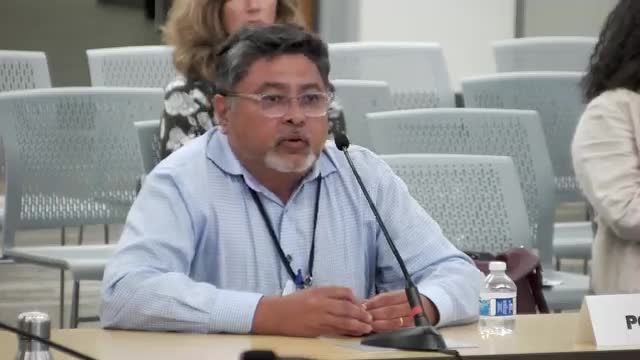Innovative program tackles addiction crisis in jails
September 20, 2024 | San Mateo County, California
This article was created by AI summarizing key points discussed. AI makes mistakes, so for full details and context, please refer to the video of the full meeting. Please report any errors so we can fix them. Report an error »

In a recent government meeting, officials provided an update on a comprehensive program aimed at addressing substance use disorders (SUD) within the correctional system. Celebrating its 20-month milestone, the initiative is described as holistic, innovative, and inclusive, with a strong emphasis on feedback from incarcerated individuals.
Key components of the program include a medical observation unit designed for those undergoing withdrawal, medication-assisted treatment (MAT), and various therapeutic interventions such as life skills training and reentry planning. The process begins with an intake assessment to evaluate medical, mental health, and substance use needs. Those identified as under the influence are closely monitored in the medical observation unit, where they receive hydration and palliative care to ease withdrawal symptoms.
The program has reportedly led to significant benefits, including a reduction in overdose incidents within the jail. Officials noted that the dedicated medical team, which includes doctors and nurses, provides regular assessments and medication administration, contributing to improved health outcomes for incarcerated individuals. The average number of individuals in the medical observation unit fluctuates, with around 50 people typically receiving care for substance-related issues.
A notable aspect of the program is its adaptability; officials have implemented feedback mechanisms to continuously improve services based on the needs of both incarcerated individuals and staff. This responsiveness has resulted in increased participation in the MAT program, with 550 individuals engaging in treatment this year alone.
Successes highlighted during the meeting included the establishment of a kiosk in the medical observation unit, allowing individuals to access information about external services, and the introduction of a Narcan vending machine to combat opioid overdoses. The program has also fostered collaborations with local law enforcement and behavioral health organizations, enhancing the support network for those transitioning out of incarceration.
Overall, the initiative aims to emulate community-based services within the correctional environment, striving to reduce recidivism and improve the well-being of individuals affected by substance use disorders.
Key components of the program include a medical observation unit designed for those undergoing withdrawal, medication-assisted treatment (MAT), and various therapeutic interventions such as life skills training and reentry planning. The process begins with an intake assessment to evaluate medical, mental health, and substance use needs. Those identified as under the influence are closely monitored in the medical observation unit, where they receive hydration and palliative care to ease withdrawal symptoms.
The program has reportedly led to significant benefits, including a reduction in overdose incidents within the jail. Officials noted that the dedicated medical team, which includes doctors and nurses, provides regular assessments and medication administration, contributing to improved health outcomes for incarcerated individuals. The average number of individuals in the medical observation unit fluctuates, with around 50 people typically receiving care for substance-related issues.
A notable aspect of the program is its adaptability; officials have implemented feedback mechanisms to continuously improve services based on the needs of both incarcerated individuals and staff. This responsiveness has resulted in increased participation in the MAT program, with 550 individuals engaging in treatment this year alone.
Successes highlighted during the meeting included the establishment of a kiosk in the medical observation unit, allowing individuals to access information about external services, and the introduction of a Narcan vending machine to combat opioid overdoses. The program has also fostered collaborations with local law enforcement and behavioral health organizations, enhancing the support network for those transitioning out of incarceration.
Overall, the initiative aims to emulate community-based services within the correctional environment, striving to reduce recidivism and improve the well-being of individuals affected by substance use disorders.
View full meeting
This article is based on a recent meeting—watch the full video and explore the complete transcript for deeper insights into the discussion.
View full meeting
